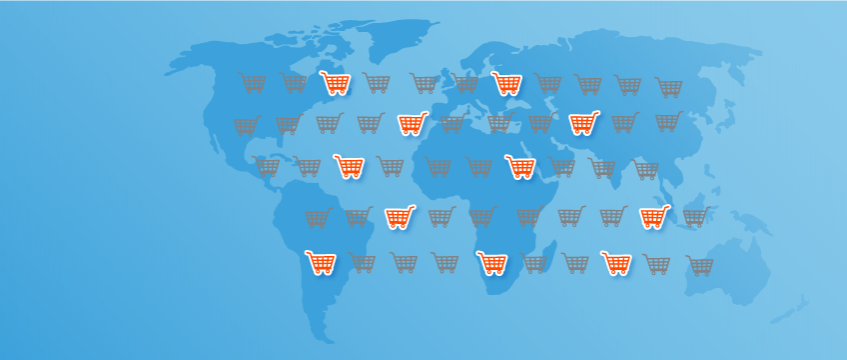
According to eMarketer, global retail e-commerce sales will reach an astounding $1.915 trillion this year, accounting for 8.7 percent of total retail spending worldwide.
Overall retail sales growth is slowing, but e-commerce retail sales growth is expanding rapidly. It is projected that by 2020, retail e-commerce sales will increase to $4.058 trillion, which will account for 14.6 percent of all retail spending.
Clearly, e-commerce represents significant opportunities for enterprising entrepreneurs. The e-commerce industry in three countries in particular is showing signs of major growth to come.
Every second, three inhabitants of India use the internet for the first time, and it is estimated that by 2030, 1 billion Indians will be online. And when they get there, e-commerce will be there to greet them.
The Economist reports that e-commerce sales in the country hit $16 billion dollars in 2015, but that amount is projected to be as much as seven times larger by 2020. Why?
There are a number of factors that, when taken together, form a very rosy picture of the future for e-commerce in India. For starters, India’s population of approximately 1.3 billion people makes it not only the second most populated country in the world, but also a vast potential playing ground for e-commerce.
Additionally, declining broadband subscription prices in the country and the launch of 3G services have led to widespread smartphone adoption, putting the potential for mobile e-commerce literally in the hands of millions of Indians.
The Economist also reports that income per person in India, while still quite low by the standards of some developed nations, could double by 2025. Add to that the fact that two-thirds of the Indian population is under the age of 35, a demographic that is comfortable with the concept of e-commerce, and the path for e-commerce growth becomes even clearer.
Flipkart, India’s Amazon-like e-commerce platform, is looking to increase its number of sellers through a variety of initiatives from teaching sellers how to manage peak sales during Diwali to advising fashion brands on trends and production. Meanwhile, Amazon is offering training, photography, and a handful of other services to encourage shop owners to sell their wares online.
The Pakistan Telecommunication Authority (PTA) reports that Pakistan is poised on the brink of a major e-commerce wave. While the PTA lists e-commerce as a $30 million industry at this point, it estimates that the potential is there for growth to “several hundred million dollars by 2020.”
Meanwhile, Gulf News paints a different picture, reporting that the e-commerce industry in Pakistan is already valued at $60 million and likely to grow to over $1 billion by 2020. While the two sources may not agree on the current figures, both agree that the future of e-commerce in Pakistan is bright.
Pakistani business owners attribute the e-commerce industry growth to the introduction of mobile broadband in Pakistan and the increase in mobile payment platforms in the country. Additionally, it is believed that people ages 34 and under are driving e-commerce growth, making Pakistan a promising place for e-commerce businesses to prosper in coming years.
E-commerce is an increasingly attractive trend to a population of digital consumers in the Philippines. According to Huffington Post, the internet is a huge draw for a growing number of citizens of the Philippines. Consider these statistics regarding internet use in the country:
The government of the Philippines is banking on e-commerce to help small and medium-sized enterprises to become globally competitive. To that end, the Department of Trade and Industry (DTI) launched the Philippine E-Commerce Roadmap 2016-2020. The DTI observes about the E-commerce Roadmap that the government “expects renewed and reinvigorated collaboration between the government and the private sector to fully accelerate the growth of Philippine e-commerce – one that is globally competitive and integrated.”
Meanwhile, Lazada Philippines, the country’s largest e-tailer, is betting on continued growth. Founder and CEO Inanc Balci estimates that by 2020, e-commerce will be a $5 billion industry in the country. He states: “Philippine GDP is also growing, disposable income is growing. If you put all these together, you are going to be seeing a very aggressive e-commerce growth in the Philippines.”
Those involved in e-commerce stand to profit from growth in emerging markets like India, Pakistan, and the Philippines. As e-commerce becomes strongly entrenched globally, opportunities abound for extending your marketing reach to a truly worldwide audience.
As this trend continues, it will be more important than ever to find a way to make global shopping easy for your customers. Payoneer can help with that through our globally accepted payment processing solution. Contact us today to see our e-commerce solution in action.